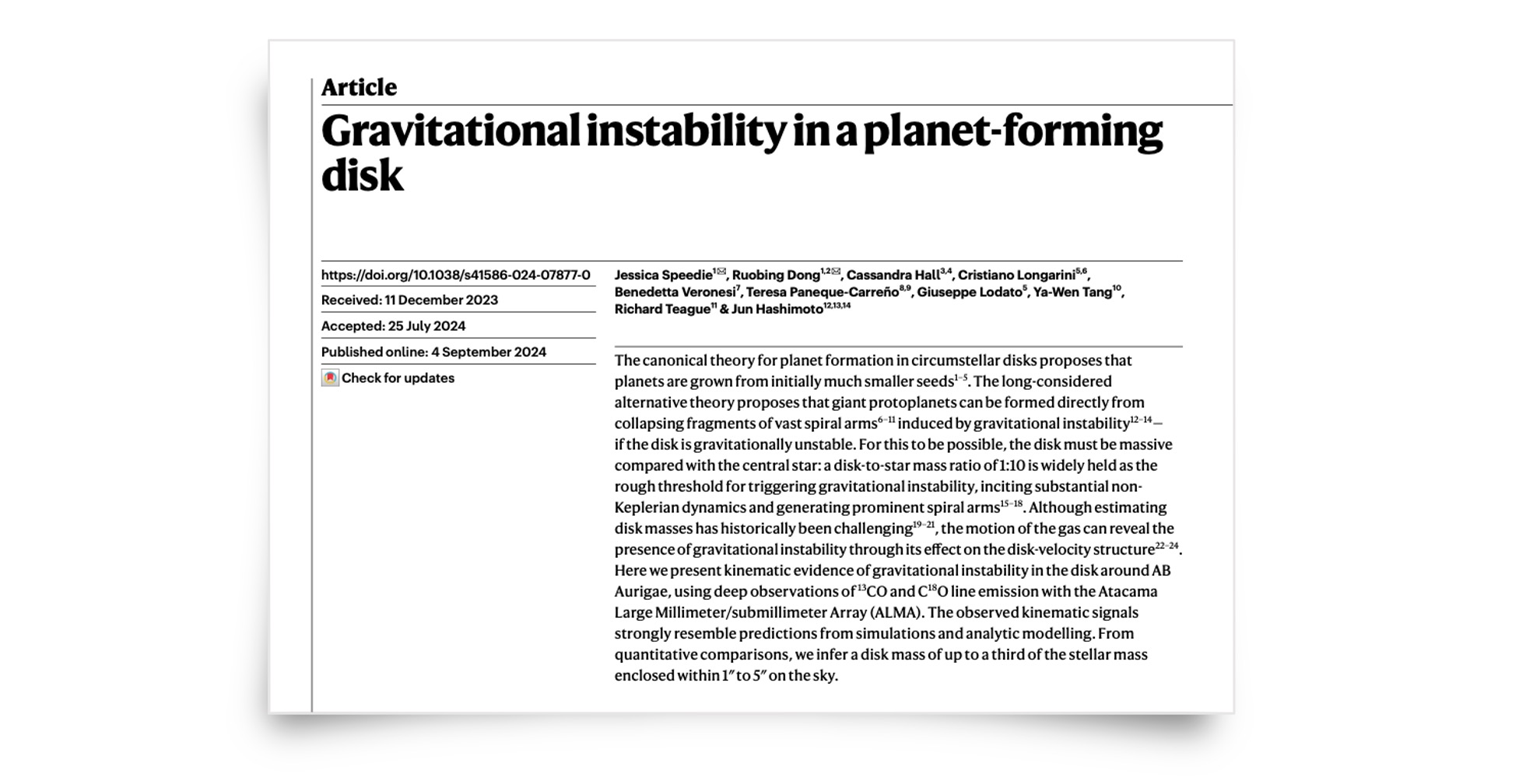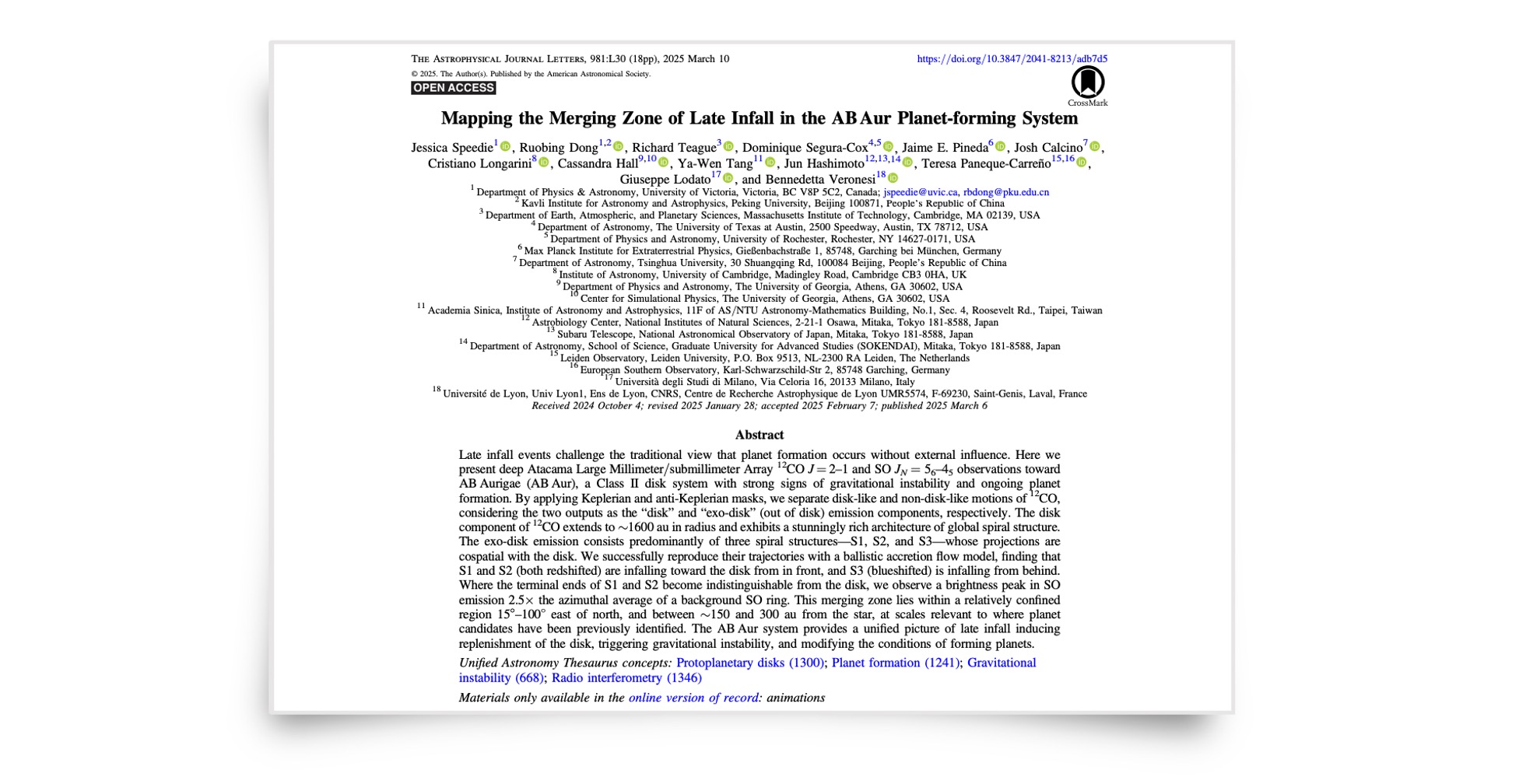Introduction#
This is a guide to the reduction and imaging of ALMA program 2021.1.00690.S (PI: R. Dong), which is a deep and fine-kinematics gas program towards the AB Aurigae protoplanetary disk. The scripts associated with this guide can be found at the companion github repository. All of the final data products (measurement sets, image cubes, VADPs) are publicly available.
Things to keep in mind:
The HTML component (this collection of webpages) works together with the scripts. The HTML component is intended to provide visualizations of the outputs or results after running each part of the scripts. It also provides some written context, explanation or motivation behind the chosen approaches, on a selective basis.
The chosen approaches are specific to our program and science goals. What works for your program might be different!
This guide is intended to be a snapshot, and will not be updated over time. The choices and steps it presents are a function of the wisdom at the time. Of course, the communal wisdom is constantly changing. Software is continuously changing too. What is presented here likely won’t hold forever.
As an additional reference, the refereed journal articles where the data were published are linked below. Their methods sections contain complete overlap with the content here.


The workflow#
The guide can be split in half into “reduction” and “imaging” categories. The former is broken into four “steps”, three involving purely the continuum data and the fourth involving purely the lines. The “0th” step describes some ways to get prepared to start working with the data. But first, take a look at the Learning Resources and the big-picture Breakdown of Our Task.
Overview
Step 0 - Getting set up
Step 1 - Prepare the continuum
Step 2 - Phase alignment
Step 3 - Self-calibration of the continuum
Step 4 - Prepare the lines
Imaging - Continuum
Imaging - Lines
Wrap-up
FAQ#
Where can I find information about the expanding kernel high-pass filter technique used in Speedie et al. 2024 & 2025 to enhance image contrast in moment maps?
That’s in a separate github repository called expanding_kernel, here.
The python function can be found in expanding_kernel.py and there is a lengthy demonstration of use provided here.
Where can I find information about the anti-Keplerian masking used in Speedie et al. 2025 to isolate infall in the 12CO line data?
Making an anti-Keplerian mask is trivial once you’ve created a Keplerian mask with Rich Teague’s keplerian_mask package. It’s simply a case of switching the ones to zeros and vice versa. You can find some lines of code doing that in this script (lines 74-79 and lines 81-89).
Please note the anti-Keplerian masking is not applied as a CLEAN mask during imaging. See details on our approach to the line imaging here.
Acknowledgements#
Sincere and special thanks go to Ryan Loomis, Sarah Wood and Tristan Ashton at the North American ALMA Science Center (NAASC) for providing science support and technical guidance on this ALMA data as part of a Data Reduction Visit to the NAASC, which was funded by the NAASC. The reduction and imaging of the ALMA data was performed on NAASC computing facilities.
Comments and corrections are much appreciated (especially if you are a student!). Get in touch: jspeedie@uvic.ca.
